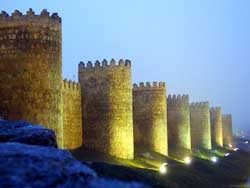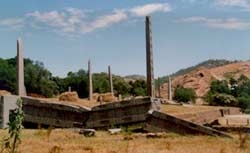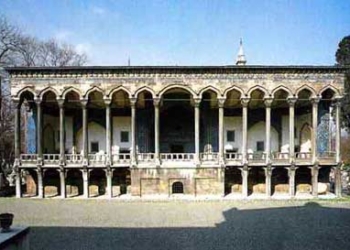This is one of the masterpieces of Jules Hardouin-Mansart (who also designed the Place de la Victoire). The square is named after the Duke of Vendôme, who once lived here. It was constructed between 1687 and 1720, centered around an equestrian statue by Girardo dedicated to King Louis XIV.
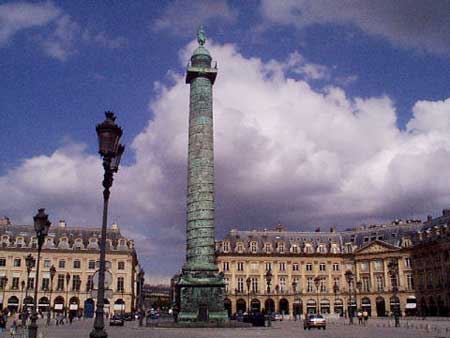
Like many other monuments, it was destroyed during the revolution. The square exemplifies a perfect model of simple and rustic artistic style. It has an octagonal shape and is surrounded by buildings. The ground floors of these buildings feature large arched windows, while skillfully arranged walls adorn the façade, topped with a band of dormer windows. The square is so characteristic that anyone who looks at it can see it embodies the spirit and style of Paris.
Today, significant buildings can be found here: the famous Ritz Hotel at number 15, the location where Chopin died in 1892 at number 12, and the residence of Eugenia de Montijo, the future wife of Napoleon III. In the center of the square stands the famous column built by Gondouin and Lepere around 1860 to commemorate Napoleon I. This column is modeled after Trajan’s Column in Rome. It stands 145 feet (44.15 meters) tall, and around its shaft are a series of low reliefs arranged in a spiral pattern, depicting 1,200 scenes of the clergy at Austerlitz.
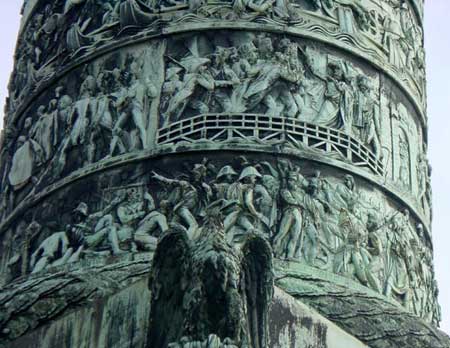
Sculptor Bergert sought to convey this legacy to future generations. Atop the column, Antoine Denise Chauset erected a statue of Emperor Napoleon I in 1814, which was destroyed and replaced by a statue of King Henry IV. Later, in 1863, a statue of Napoleon was restored to its former position, but eight years later during the Commune (when the voice of the great artist Gustave Courbet held significant weight), this statue was toppled once again. However, it was only replaced once, and the statue of Napoleon erected afterward was merely a replica.








































